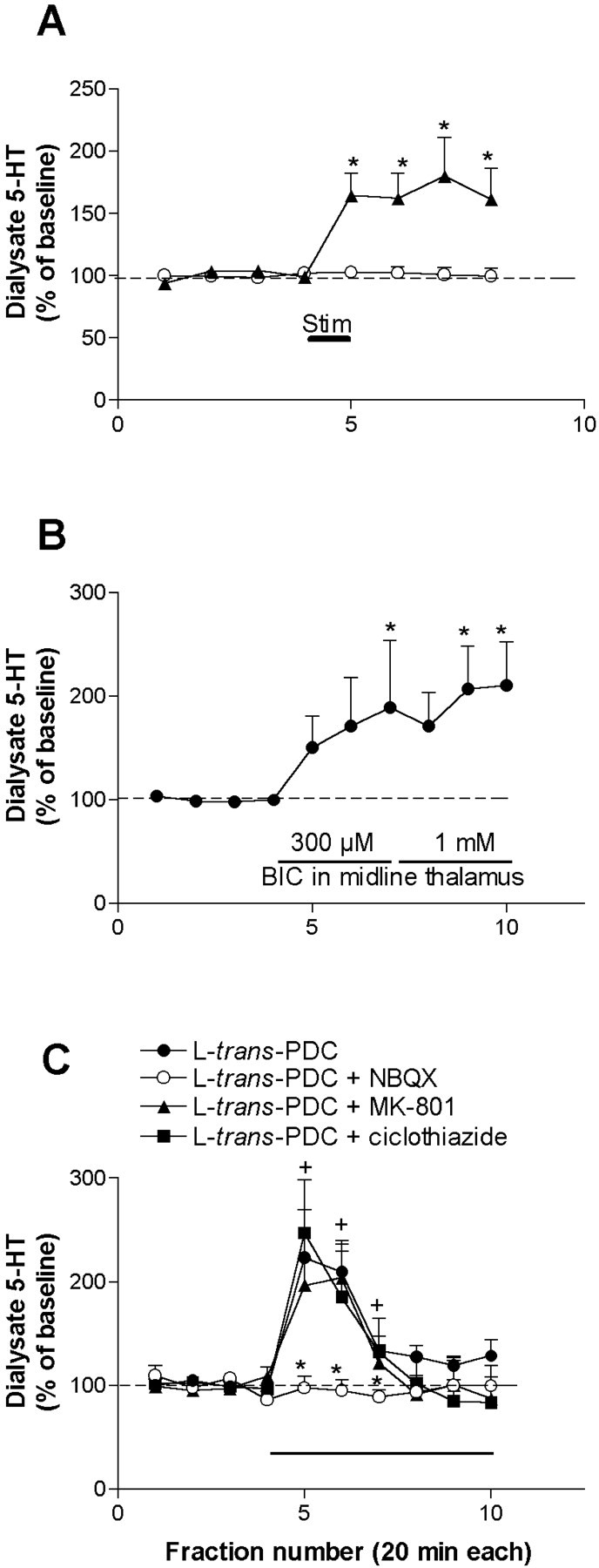Fig. 7.

A, The electrical stimulation of a midline thalamic area affecting the mediodorsal nucleus and a small part of the centromedial nucleus (5 Hz, 1.5 mA, 0.3 msec pulses; shown by a bar) for 20 min increased the 5-HT release in the mPFC of chloral hydrate-anesthetized rats (filled triangles;n = 6). Control rats were implanted with microdialysis probes and thalamic electrodes, but no current was passed (n = 6; open circles). *p < 0.05 versus baseline; Duncan test post-ANOVA.B, In dual probe microdialysis experiments, the application of bicuculline (BIC; 300 μm and 1 mm, shown by a bar; n = 8) by reverse dialysis in the centromedial and mediodorsal thalamic nuclei significantly increased the 5-HT release in mPFC. The variability of the 5-HT increase was relatively large, possibly because of slight differences in the location of probes. *p < 0.05 versus baseline; Duncan test post-ANOVA. C, Effects of the local application of the glutamate uptake inhibitorl-trans-PDC, alone or in combination with NBQX, MK-801, and cyclothiazide on the 5-HT release in mPFC (n = 4–5).l-trans-PDC (4 mm) significantly increased the 5-HT release. This effect was prevented by the coperfusion of NBQX but not by MK-801 (300 μm each). Cyclothiazide (300 μm), a drug that prevents the desensitization of AMPA receptors, did not affect the time course or potentiate the effect of l-trans-PDC, suggesting that the marked tachiphylaxis of the effect is possibly caused by a presynaptic adaptive change in glutamate synthesis and release resulting from prolonged inhibition of reuptake.+p < 0.05 versus baseline; *p < 0.05 versusl-trans-PDC alone; Duncan test post-ANOVA.
